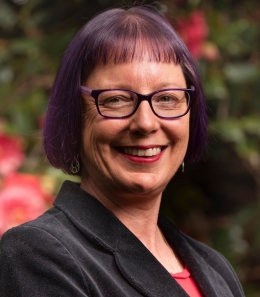As Australians return to their usual workplaces and adjust to ‘COVID-normal’, a discrepancy remains between the needs, preferences and perceptions of managers and employees.
A new study conducted by UNSW Canberra and CQUniversity, with support from the Community and Public Sector Union (CPSU), demonstrated that while managers are becoming increasingly supportive of flexible working arrangements, managers and employees have different perceptions of employee productivity when work is done remotely.
“Almost three in five employees stated that their productivity was higher when working from home than in the office,” lead author, UNSW Canberra Associate Professor Sue Williamson, said.
“Conversely, two thirds of managers thought that productivity remained the same whether the work was conducted at home or in the office. At the very least, respondents believed that productivity was being maintained throughout 2021.”

Sue Williamson
It was also revealed that managers and employees perceived the impact of working from home on employees’ mental health differently. While the vast majority of employees reported that they had not experienced any negative health and safety impacts of working from home, more than half of the managers had noticed negative or psychological impacts of working from home on their staff.
“This largely took the form of ‘COVID-fatigue’, with employees feeling exhausted and burnt out,” A/Prof Williamson said.
“However, some of the COVID-fatigue is just that – it is attributable to the pandemic. Without overarching factors such as enforced working from home and home schooling, hybrid working can be a very successful working arrangement.”
The study also revealed that a mismatch exists between preferred and actual working arrangements.
A/Prof. Williamson said more than one third of employees would like to work from home all the time or for 80 per cent of their working week. Fewer than 10 per cent of employees want to spend all their working hours in their employers’ workplace.
“It will be important for managers and organisations to work out optimum hybrid working arrangements – the amount of time employees can work from home, how tasks are distributed and workloads managed with hybrid teams,” A/Prof. Williamson said.
“Over two in five respondents also stated that if their agency did not allow them to work from home at all, they would consider changing agencies or leaving the public sector.”
CPSU National Secretary Melissa Donnelly said remote and flexible working were becoming key to attracting and retaining the best employees.
“The Australia Public Service has delivered for the community throughout the pandemic, and have shown they can do that whether they are working from the office or home. It is clear that the APS has to embrace hybrid working if they wish to attract and retain the best staff,” she said.
“Working from home is becoming a standard employment condition. We’re seeing that employees will consider finding new employment if their agency does not allow them to work flexibly – and there are now more options available for them to do so.”
More than 5000 Australian Public Service employees responded to the survey, which was conducted in June-July 2021. It follows a similar survey conducted in 2020 and demonstrated management support for flexible working arrangements had increased over the course of the pandemic.
'Working during the pandemic: The future of work is hybrid' was published today.
